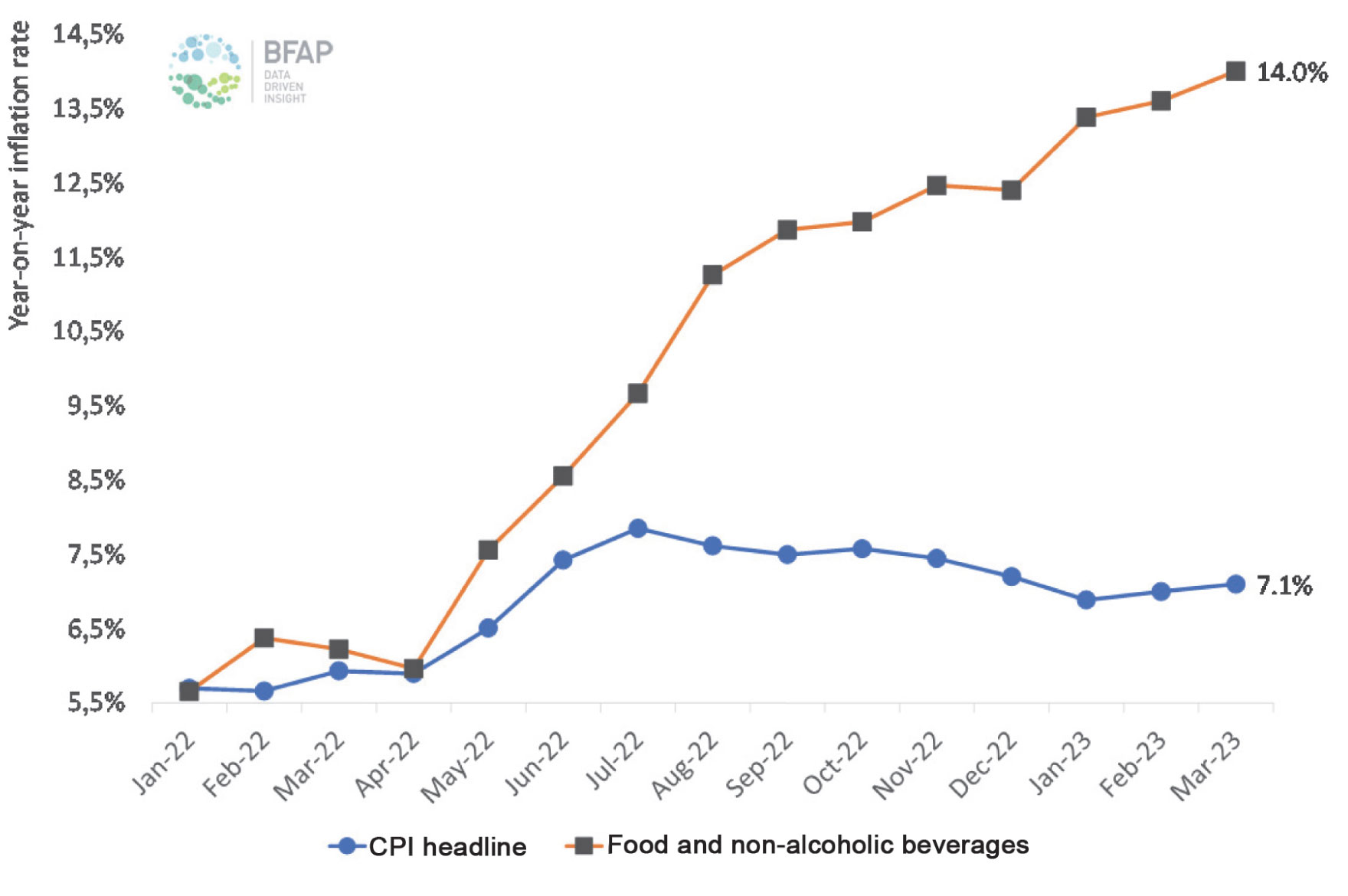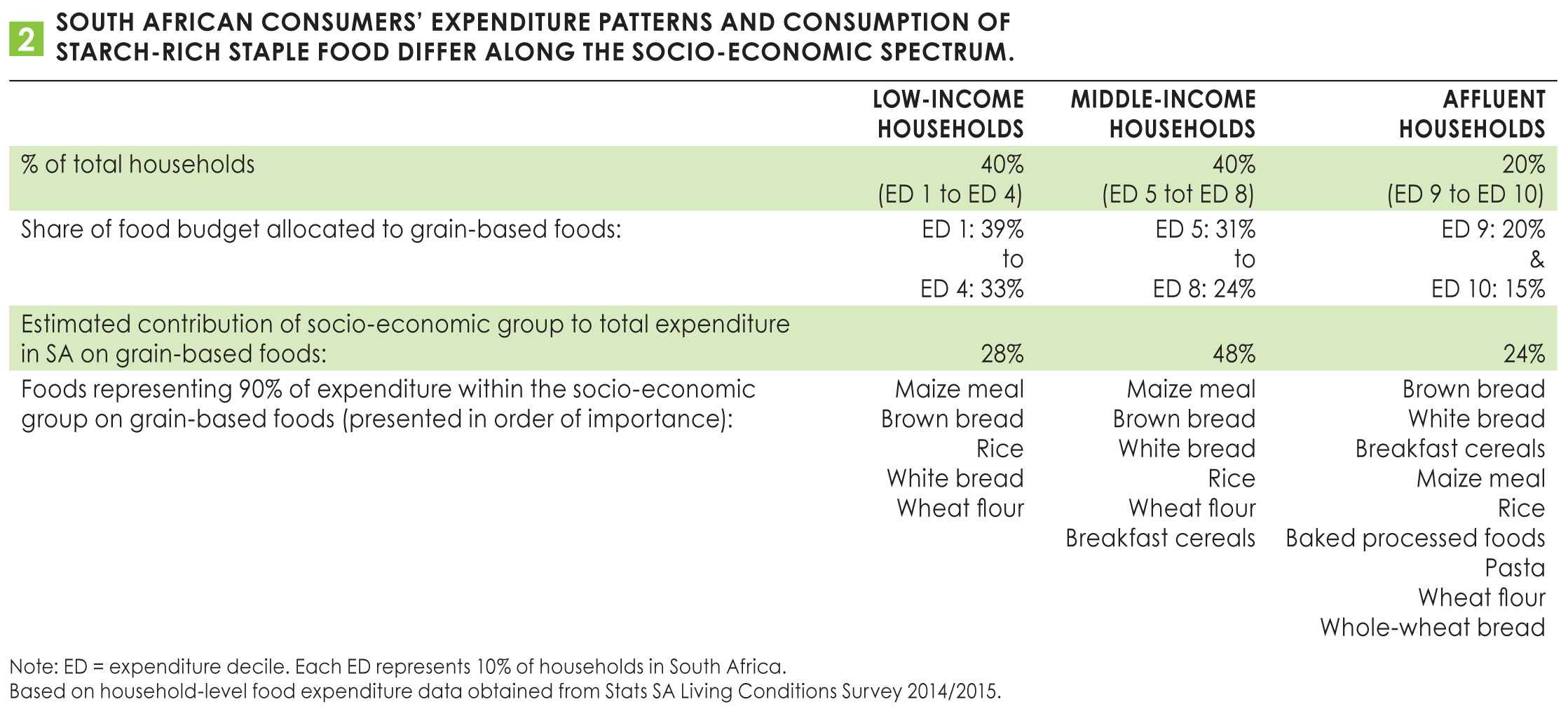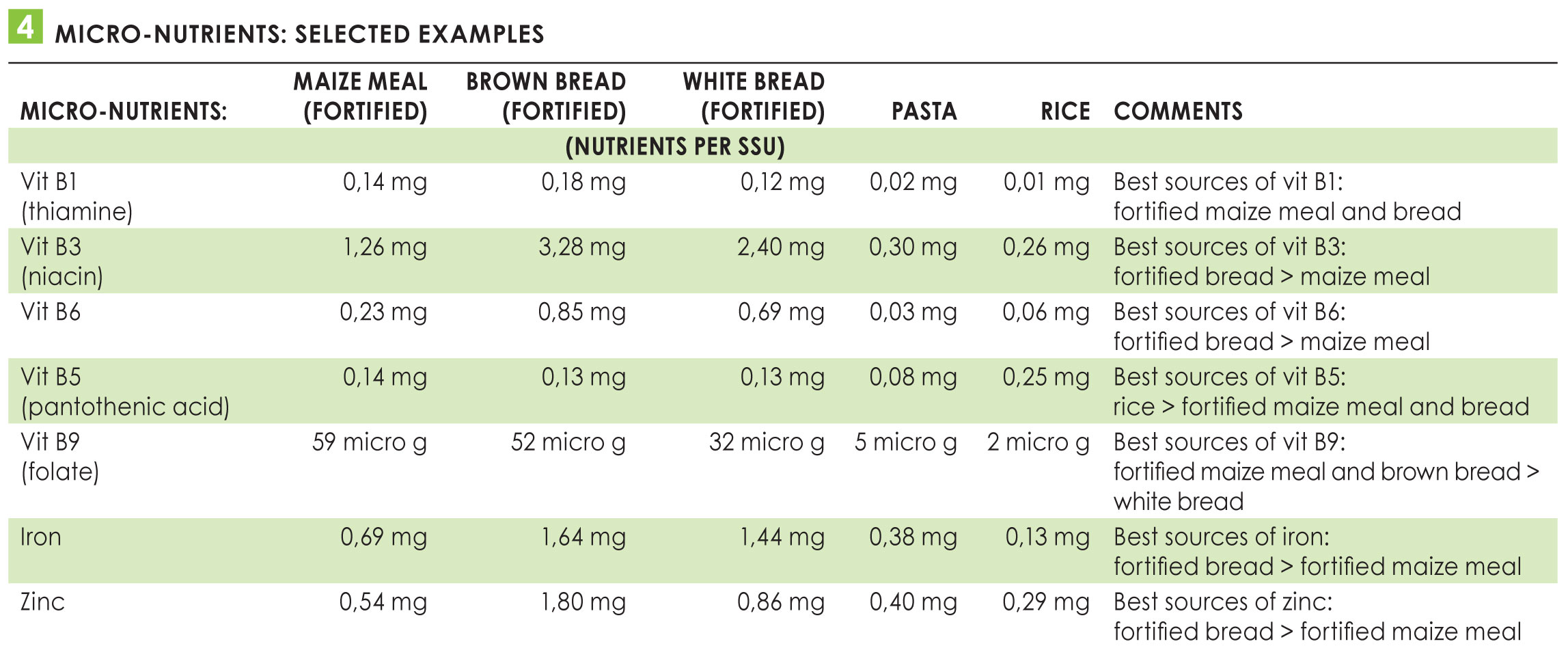
Bureau for Food and
Agricultural Policy (BFAP)
The FAO defines staple foods as foods that are ‘eaten regularly and in such quantities as to constitute the dominant part of the diet and supply a major proportion of energy and nutrient needs’. Grain-based foods (products of maize, wheat, rice, sorghum, millet, oats, rye, barley and other cereals) contributed an estimated 69% of average daily human energy needs in South Africa from 2010 to 2020 (FAOSTAT Food Balance Sheets), with a slightly lower staple dependence over time as the contribution of starch-rich staple foods to total daily energy needs decreased over time from 70% (2010/2011) to 66% (2019/2020).
The impact of food inflation
Soaring food inflation has been a prominent characteristic of the South African food landscape for the last year, with year-on-year inflation on food and non-alcoholic beverages increasing from 5,7% in January 2022 to 14,0% in March 2023 (see Graph 1).

Source: Stats SA, April 2023
Graph 2 illustrates the year-on-year inflation rates from the first quarter (Q1) of 2022 to Q1 2023 for maize meal, white bread, brown bread, pasta and rice. In terms of individual grain-based foods, in Q1 of 2023 the highest year-on-year inflation was reported for maize meal (+30%), followed by bread (+18%) and pasta (+16%), while deflation was reported for rice (-9%).

Source: Stats SA, April 2023
Considering a longer time perspective, from Q1 2022 to Q1 2023, the following was observed:
- Continued upwards food inflation for maize meal, increasing from +3% year on year in Q1 2022 to +30% year on year in Q1 2023.
- Upward inflation on bread and pasta during 2022, with some recovery (lower year-on-year inflation rates) towards Q1 2023.
- Consistent deflation on rice retail prices from Q1 2022 to Q1 2023.
The continued and high food inflation observed for maize meal poses a threat to the food security status of numerous households in South Africa – highly dependent on maize meal for daily food energy intake.
A food single serving unit (SSU) refers to a single unit of a particular food within a particular food group providing a similar amount of energy/nutrients as other units within the same group. Graph 3 presents a comparison of the SSU cost for dominant grain-based foods in 2002 and Q1 2023. In Q1 2023 maize meal remained the most affordable grain-based food at R0,36/SSU, followed by rice at R0,46/SSU. From 2022 to Q1 2023 the relative price gap between rice and maize meal has become smaller. This could increase the allure of rice as an alternative staple to maize meal, especially when considering shorter cooking times associated with rice. However, replacing some maize meal in the daily diet with rice could result in a loss of micronutrients as maize meal is fortified with vitamins and minerals.

Source: BFAP calculations based on Stats SA retail price observations
In Q1 2023 a SSU of brown bread, white bread and pasta were respectively 2,7 times, 3,0 times and 3,2 times more expensive than a SSU of maize meal, which in the case of bread includes the price premium associated with the ready-to-eat format of bread with no cooking time required.
Comparing the nutritional value of grain-based staple foods in South Africa
Starch-rich foods are per definition consumed as a major source of energy in the general population of a country. However, grain-based foods as a source of carbohydrates and energy are only part of the ‘nutritional story’ of these foods. In this section, the nutritional value of grain-based foods based on food composition data from the Food Composition Tables of South Africa (5th edition, 2017) is explored, focusing on SSU quantities of maize meal, bread, pasta and rice (delivering approximately 400 kilojoules per SSU).
All the considered grain-based foods contain vitamins B1, B3, B5, B6 and B9, as well as iron and zinc. Among these five grain-based foods fortified brown bread is the best source of vitamins B1, B3 and B6, as well as iron. Fortified white bread is the best source of zinc. Fortified maize meal is the best source of vitamins B5 and B9. Rice is often recognised as a source of phosphorus.
The optimal intake of grain-based staple foods from a nutritional perspective should rely on several key considerations:
- Consume a variety of foods within the starch-rich foods category.
- Select fortified bread and maize meal to optimise micronutrient intake.
- Select the whole-grain versions of foods (such as brown rice, brown/whole-wheat bread and whole-wheat pasta).

































